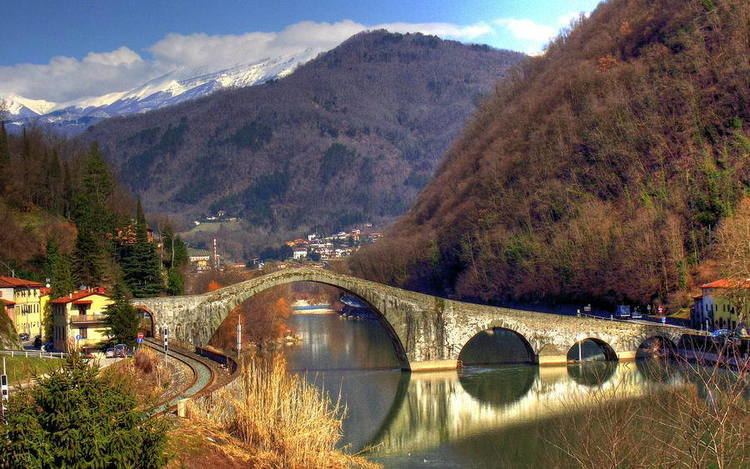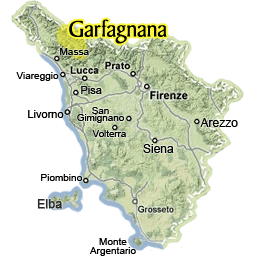Country Italy | ||
 | ||
Comuni CareggineCamporgianoCastiglione di GarfagnanaFosciandoraGallicanoGiuncugnanoMinuccianoMolazzanaPiazza al SerchioPieve FoscianaSan Romano in GarfagnanaSillanoVagli SottoVergemoliVilla Collemandina Similar Apuan Alps, Parco dell'Orecchiella, Apeninos tosco‑emilianos, Ponte della Maddalena, Grotta del Vento | ||
1944 garfagnana le ardenne italiane sub eng
The Garfagnana is a historical and geographical region of central Italy, today part of the province of Lucca, in Tuscany. It is the upper valley or basin of the river Serchio, and thus lies between the Northern Apennines' main ridge to the north-east and the Alpi Apuane to the west. It has heavy rainfall and is densely wooded. The principal towns are Castelnuovo di Garfagnana and Barga.
Contents
- 1944 garfagnana le ardenne italiane sub eng
- Garfagnana terra meravigliosa
- History
- Geography
- Economy
- References

Garfagnana terra meravigliosa
History
The people of the Garfagnana were Apuani and Friniati. The area was conquered by the Romans in 180 AD. After the fall of the Carolingian empire in 888 it came under the control of various feudal lords, and was later caught up in the rivalry between the Guelphs and the Ghibellines. In 1248 the Holy Roman Emperor Frederick II ceded it to the Republic of Lucca. In the fifteenth century much of the territory came under the control of the d'Este family of Ferrara, and in 1847 the remaining part was absorbed into the Duchy of Modena. With the unification of Italy, the Garfagnana became part of the province of Massa e Carrara, and in 1923 passed to that of Lucca.
Geography

The Garfagnana is almost entirely mountainous. It has heavy rainfall, and much of it is densely wooded, often with sweet chestnut, Castanea sativa. Chestnuts were until recently an important food source; the Farina di Neccio della Garfagnana, a chestnut flour, has DOP status. The farro of the region, Farro dell Garfagnana, has Indicazione Geografica Protetta status; the area is also known for its lentils and for its porcini mushrooms. It is the area of origin of the Garfagnina breed of cattle, and of the Garfagnina Bianca sheep breed.
The capital of the region is Castelnuovo di Garfagnana.

The Garfagnana and Lunigiana were struck by a powerful earthquake on 7 September 1920. The worst damage and largest number of deaths were at Villa Collemandina; the greatest intensity was recorded there and at Fivizzano.
Economy

The region is primarily agricultural, however in recent years there has been an upsurge in Agritourism and holiday homes, which has now become important to the economy of the region.
